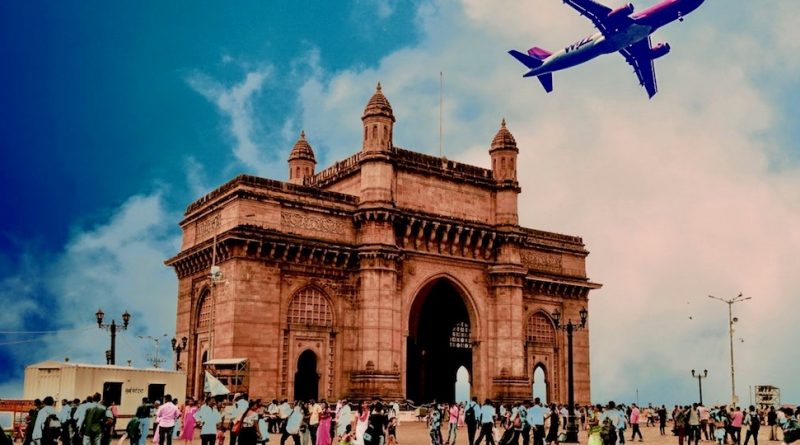Pursuant to the economic liberalisation in India, wealth creation has reached unprecedented heights. From the time of independence onwards, the Indian economic era can be divided into three main periods:
From 1947 to 1993 – Pre-liberalisation of the economic policies in India.
From 1993 to 2007 – Start of economic liberalization, a time when inbound investments began in earnest.
From 2007 to Present – Period of optimum economic liberalization, a time when inbound and outbound investments to and from India were allowed.
This outbound investment and remittance post 2007 has resulted in Indian HNIs traveling abroad more frequently, for work as well as pleasure. Destination weddings in exotic international locations and sending their children out of India for undergraduate and graduate studies is fairly common among HNIs.
According to the RBI, the Indian HNI remittance has increased from US$440 million in 2007-08 to US$13.5 billion in 2017-18. The top spending for HNIs was on their children’s education – around US$4 billion, followed by foreign travel and gifts to the family.
As the data shows, spending on children’s education abroad is on top of the list for Indian HNIs. Today not only HNIs but even middle-class parents aspire to send their children abroad to study.
However, the past migration history of India and the affluence of the Indian diaspora in foreign countries prompts most Indians parents to believe that if their child gets a foreign education, he/she will be able to settle in that country permanently. They equate studying abroad with settling abroad. They feel that once their child goes abroad, they will be able to make a good life for themselves and settle comfortably.
We must not forget that just like India, there are parents in many countries around the world who send their children to study in countries such as the USA, Canada, Australia, UK, and New Zealand.
This has increased the number of foreign students applying for immigration after study in the aforementioned countries. Hence the queue and waiting period for obtaining immigration is getting longer and longer.
Let us take an example of an Indian student studying in the USA. If this student started studying for a Master’s program in the year 2002, he is likely to have completed it by 2004. Like most students, he would have converted his status from an F1 student visa to an H1B work permit visa upon obtaining a job. He would have worked for six consecutive years on this visa, assuming that the company he worked for continued to hire his services. Hence until 2010, he would be working on an H1B visa.
Let us assume that this student applied for a Green Card in 2010 under one for the following categories – EB1, EB2, and EB3 and received approval for his I-140 petition. As each of these categories has a quota of 40,000 Green Cards per year, and as the number of foreign students applying for a Green Card in these categories is very high, it takes several years to receive this much-coveted card.
As per the USA Government official website, petitions received/ approved until January 2015 are being issued a Green Card under the EB1 category. Petitions approved/received until July 2009 are being issued a Green Card under the EB2 and EB3 categories. Hence as of today, our student has to wait for at least another 4 years for a Green Card under the EB1 category and another 10 years under the EB2 and EB3 categories, assuming that rules do not change and processing time remains more or less the same.
Due to this unprecedented delay, there are many Indian students in the USA who are still waiting to get a Green Card even after 12-15 years of completing their studies. When wealthy Indian parents of such candidates realize that their children cannot obtain residency after the study program, they try to intervene by investing money on behalf of their children in programs such as the EB-5 Investor visa of the USA to secure a Green Card.
Other popular destinations for study abroad are Canada, Australia, New Zealand, and the UK. Thanks to thousands of student visa consultants and agents, these countries have the highest number of Indian international students. Unfortunately, due to the bad advice dispensed by local agents – who are motivated by the hefty commissions they receive from foreign education institutes – a good number of students receive a shock of their life when they realize that the course they have been enrolled into is not a Bachelor’s/Master’s program but an ordinary college diploma or certificate course. Also, the institution they are going to study in is not a recognized university but a local college.
There are innumerable horror stories created by parents and their children themselves because of their desperation to go abroad. This has led to frustration, disappointment, and careers of many bright students being destroyed due to short-sightedness and lack of knowledge.
Most Indian parents, who want their children to study abroad fail to realize that circumstances that existed a few years ago to settle abroad are no longer applicable in 2020. Immigration laws and regulations change from time to time and from country to country.
Unless parents plan early, sending their children abroad to study will only result in spending exorbitant amounts of money without any net gain, which is a permanent settlement in that country.
Though a new concept for Indian HNIs, their counterparts in countries such as China, Taiwan, and Korea have resorted to obtaining residency and citizenship by an investment of various countries around the world to secure their children’s education. This gives their children a jump start in their careers when they finish their education.
The most important advantage of obtaining residency and citizenship by investment is that the investor’s children can enjoy reduced tuition fees at the majority of top universities. Tuition fees for permanent residents and citizens is significantly lower, reduced by almost 60%-80%, in most foreign universities as compared to that paid by international students.
In many cases, the amount to be invested by an investor in a particular country is just a little higher than the tuition fees he/she would pay in international student fees, especially if the investor has two or more children.
This is where financial advisors can help their HNI and Upper Middle Class (UMC) clients to plan early for the foreign education of their children by making investments in risk-free but unconventional products such as Residency & Citizenship by Investment in many countries of the world. There are excellent opportunities available for investing in countries like the USA, Canada, the UK, some European countries and the Caribbean islands which guarantee subsidized education for children of investors.
Depending on the country this investment can in real estate, business, government bond, a donation to government, government-approved project and mix of these assets class.
For HNIs, their financial advisor is like a close family member. They expect to get not only sound financial advice regarding how to make more money by investing wisely but also knowledge regarding the latest products and services available in the market that can help them in achieving their long term and short term goals such as their child’s education and future, quality of life and expansion of business. Other factors of consideration would be NRI status, tax planning and diversification of the portfolio, investment in international real estate, etc.












